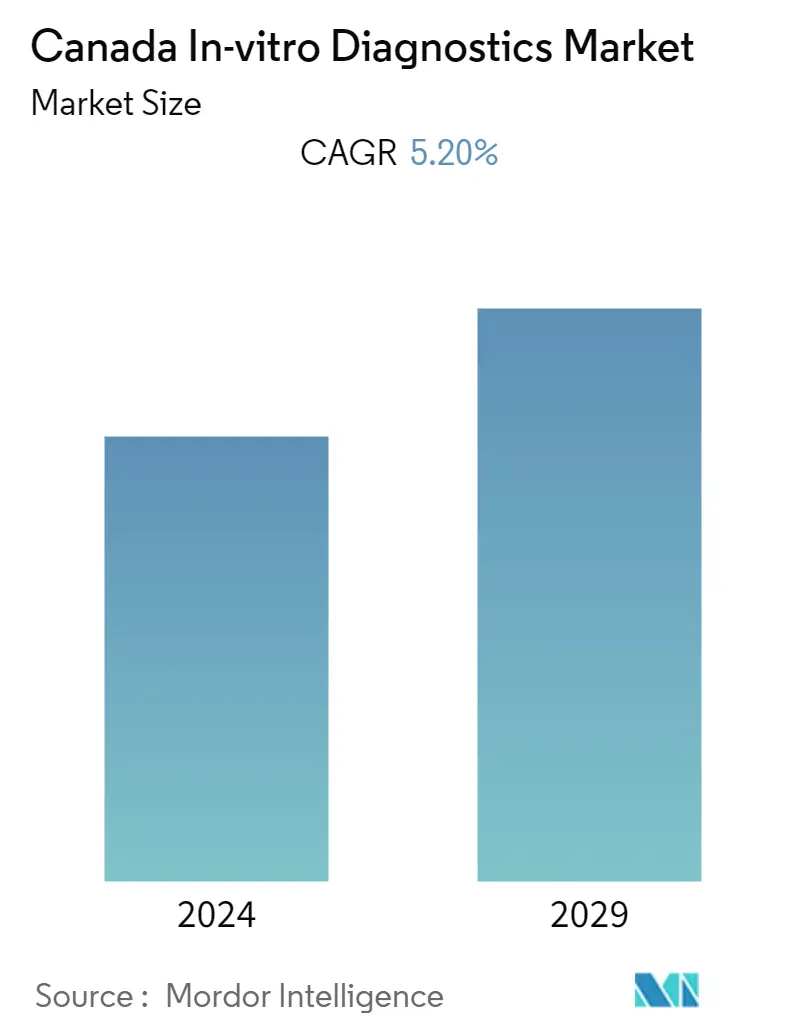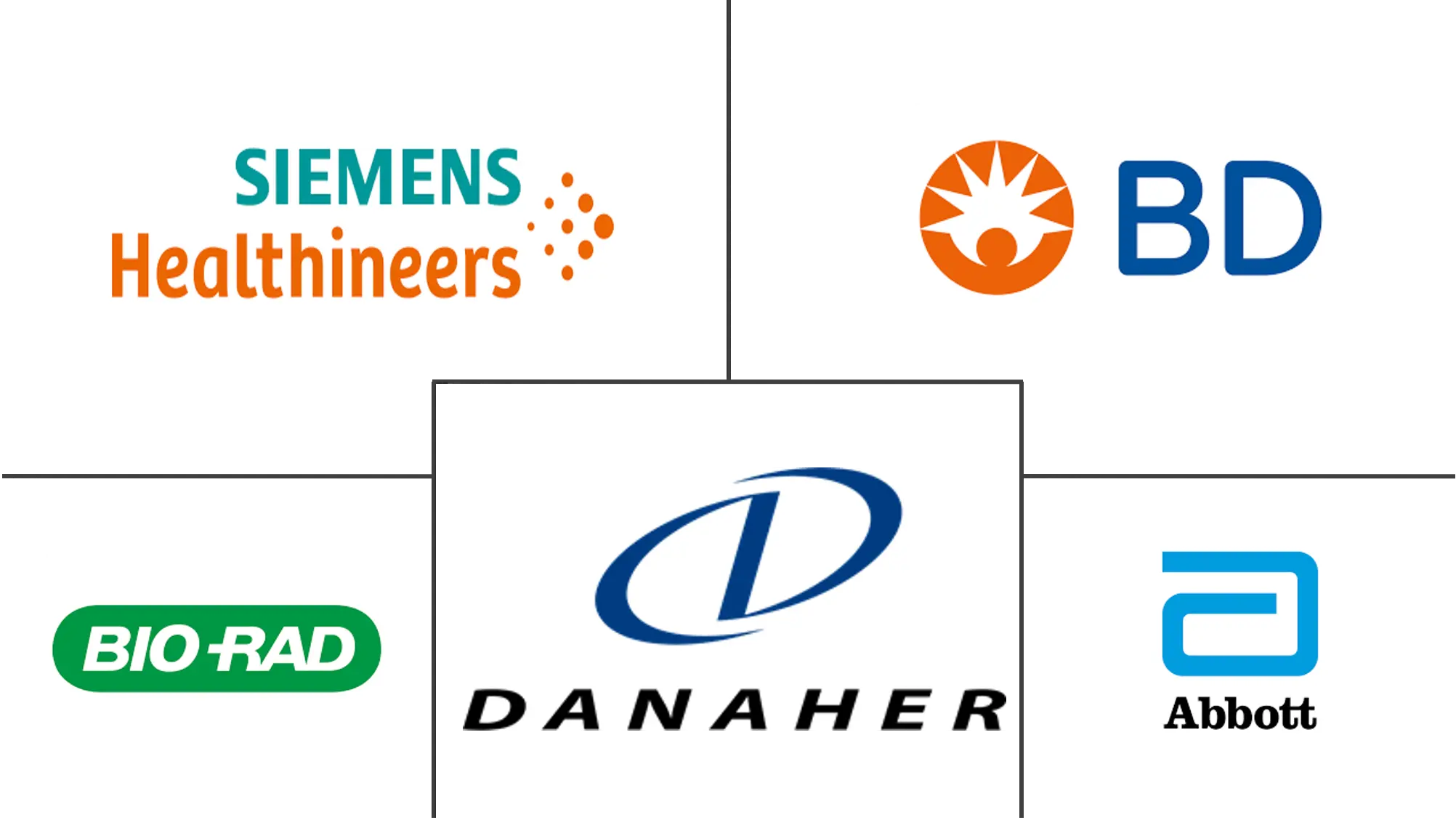Market Size of Canada In-vitro Diagnostics Industry

| Study Period | 2019 - 2029 |
| Base Year For Estimation | 2023 |
| Forecast Data Period | 2024 - 2029 |
| Historical Data Period | 2019 - 2022 |
| CAGR | 5.20 % |
| Market Concentration | Low |
Major Players
*Disclaimer: Major Players sorted in no particular order |
Need a report that reflects how COVID-19 has impacted this market and its growth?
Canada in-vitro Diagnostics Market Analysis
The Canada in-vitro diagnostics market is expected to register a CAGR of 5.2% over the forecast period, 2022-2027.
The emergence of the SARS-CoV-2 virus has increased lab testing demands to keep pace with suspected cases of COVID-19. Thus, the recent outbreak of COVID-19 has had a positive impact on the in-vitro diagnostics industry, as it involves the testing of various biological samples. Likewise, the growing need for early diagnosis of COVID-19 patients provided lucrative opportunities for the key players to expand their geographical reach within the country and has led to new product launches and approvals. For instance, in February 2021, Thermo Fisher Scientific received Health Canada authorization for its Applied Biosystems TaqPath COVID-19 HT Kit, to give a significant boost to laboratories' COVID-19 testing capabilities. Thus, such developments are likely to bolster the growth of the in-vitro diagnostics market in the country.
Moreover, the factors that are responsible for the growth of this market include the increasing use of point-of-care (POC) diagnostics; advanced technologies; and increasing awareness and acceptance of personalized medicine and companion diagnostics.
In-vitro diagnostics products and consumables are extremely valuable for disease prevention, detection, and management. The demand for point-of-care diagnostics is increasing owing to the high burden of various diseases in this country. According to the data published by GLOBOCAN 2020, it was estimated that in 2020, approximately 274,364 Canadians were diagnosed with cancer. Likewise, as per the 2022 report from the Public Health Agency of Canada (PHAC), there were 604 cases of monkeypox as of July 20, 2022. Therefore, the rising cases of these infectious diseases will help boost the demand for in-vitro diagnostics to aid in the diagnosis or detection of these diseases, in turn driving the market growth.
In addition, the emerging technological innovations in healthcare, such as biosensors, lab-on-a-chip, wearable devices, and point of care (POC) diagnostics, are increasingly becoming an important part of the healthcare landscape. POC diagnostics are no longer limited to simple tests and can now be used for diagnosing serious conditions. Market players in this region are focusing on market development strategies such as product development, merger and acquisition, and partnerships. For instance, in March 2021, QIAGEN N.V. launched the QIAcube Connect MDx, a flexible platform for automated sample processing for molecular diagnostic laboratories in Canada. Also, in April 2020, Seegene, Inc. received the Health Canada (HC) authorized interim order which allows the import and sale in Canada of Seegene's Allplex 2019-nCoV Assay, a Real-time RT-PCR test for SARS-CoV-2, the novel coronavirus responsible for the COVID-19 disease.
Thus, owing to all these market development strategies, coupled with the growing burden of several diseases in the country, the market for in-vitro diagnostics is expected to grow in Canada. However, stringent regulations and cumbersome reimbursement procedures are likely to hinder the market's growth.
